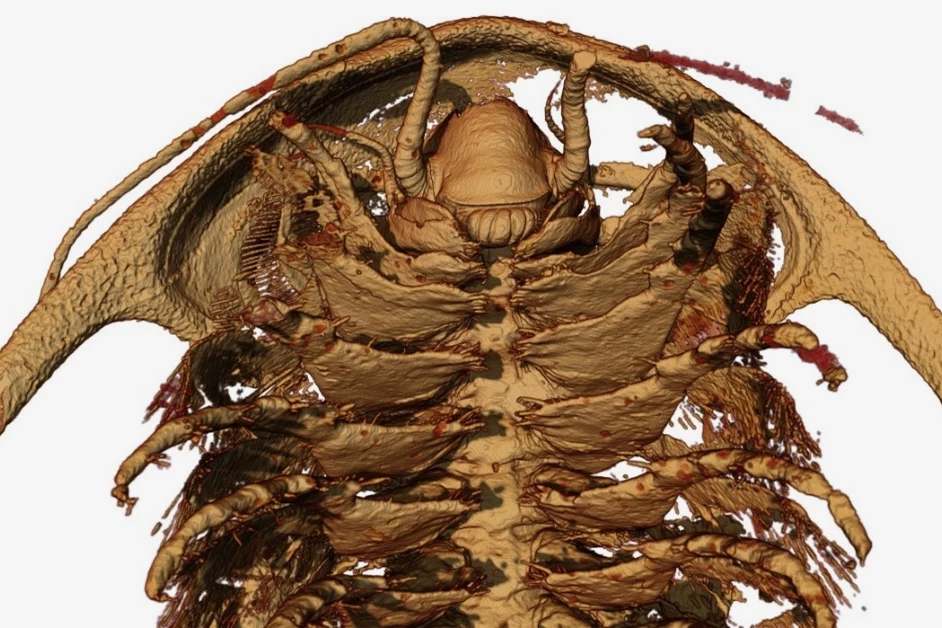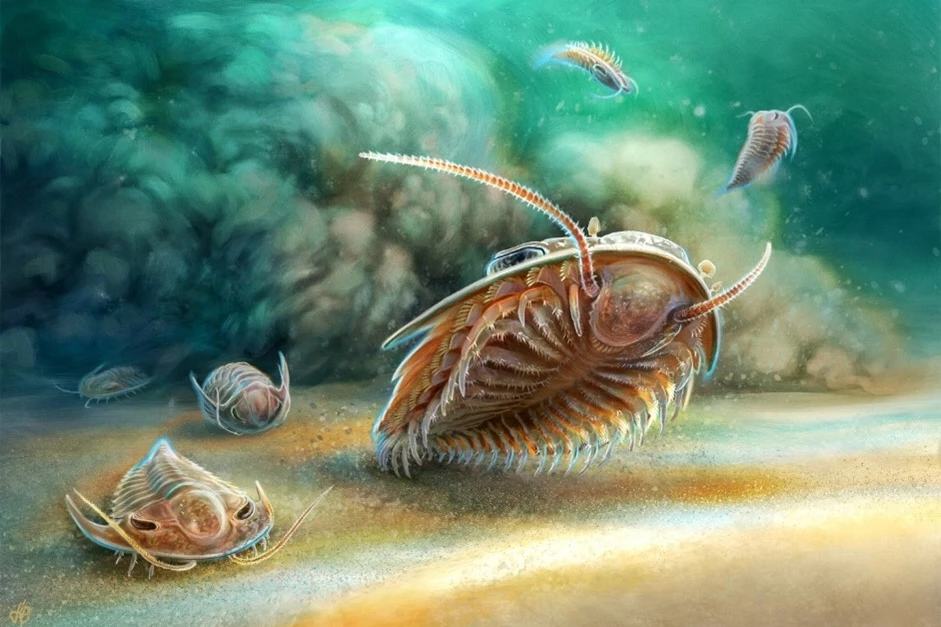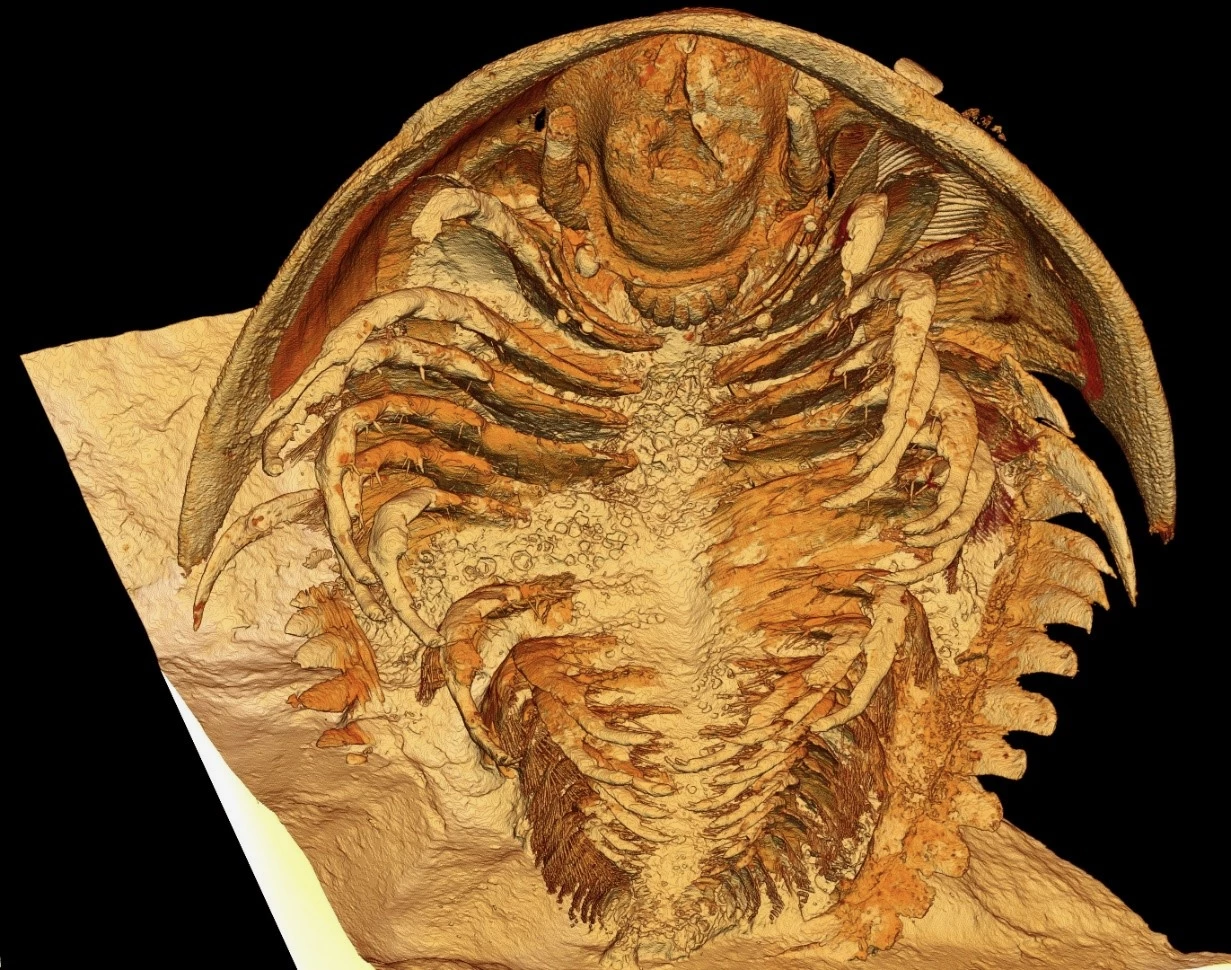Scientists have just revealed their findings on what are being described as the most pristine trilobite fossils ever found. The fossils, which show both hard exterior features and soft inner tissues, shed new light on the fascinating creatures.
Trilobites were very abundant marine arthropods, protected by calcified exoskeletons that easily fossilized.
For these reasons, the animals are very well represented in the fossil record. That said, the vast majority of the fossils include little more than the exoskeletons. There have been a few notable exceptions, including finds that showed trilobites' brains, gills (which were in their legs) and digestive tracts.
The fossils that are the subject of this latest study were found in Morocco's High Atlas mountain range, and are approximately 510 million years old. They formed when a volcanic eruption occurred in shallow ocean waters, quickly covering two species of trilobites on the seafloor with a thick layer of hot volcanic ash.

Over the course of the ensuing millennia, the ash hardened into stone while the trilobites' bodies decayed within it. This process ultimately left finely detailed trilobite-shaped cavities inside the stone, which an international team of scientists was able to image via CT scanning and computer modeling of "virtual X-ray slices."
The find is being described as a prehistoric version of Pompeii, the ancient Roman city that got covered in pyroclastic ash when the nearby Mount Vesuvius erupted. Bodies of the human victims of that eruption formed voids within the ash after it hardened.

Among other things, the High Atlas trilobite fossils include details such as fine hair-like structures (which ran along the creatures' appendages), along with the bodies of smaller mollusc-like brachiopods which were attached to the trilobites' shells via fleshy stalks.
The fossils also revealed that specialized legs surrounding the mouth, which were used for feeding, had curved spoon-like bases. What's more, while it was previously believed that trilobites had three pairs of these appendages, the "new" fossils showed that they had four.
Additionally, a fleshy mouth-covering lobe known as a labrum was shown to be present in a trilobite for the first time. It was even possible to image the creatures' digestive tracts, which fossilized in a more traditional manner after they filled with volcanic ash.
"As a scientist who has worked on fossils from different ages and locations, discovering fossils in such a remarkable state of preservation within a volcanic setting was a profoundly exhilarating experience for me," says lead scientist Prof. Abderrazak El Albani, of the University of Poitiers in France. "These findings are anticipated to lead to significant discoveries about the evolution of life on our planet Earth."
A paper on the research – which also involved scientists from the University of Bristol, Natural History Museum (London), Cadi Ayyad University (Morocco) and University of New England (Australia) – was recently published in the journal Science.
Source: University of Bristol





